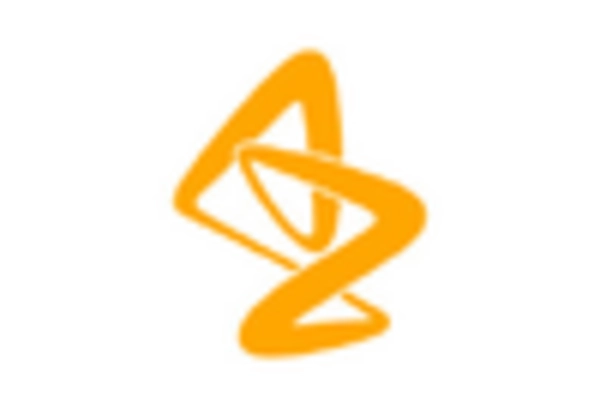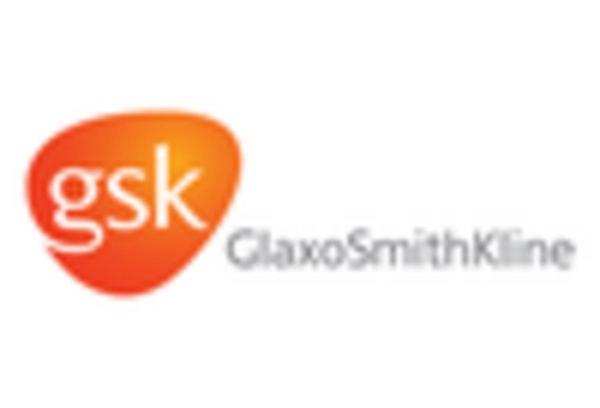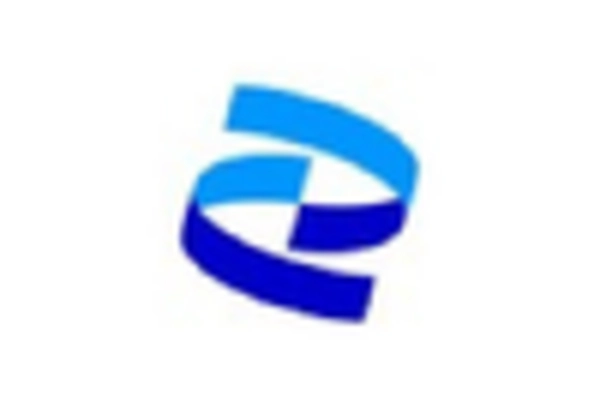Regulatory Support for Innovative Therapies
Regulatory bodies are increasingly supporting the development of innovative therapies in the Pulmonary Drug Market. Initiatives aimed at expediting the approval process for new drugs, particularly those addressing critical respiratory conditions, are becoming more prevalent. For instance, the introduction of fast-track designations and priority review pathways by regulatory agencies encourages pharmaceutical companies to invest in research and development. This regulatory environment fosters innovation and accelerates the availability of new treatments for patients. As a result, the Pulmonary Drug Market is likely to experience a wave of new product introductions, enhancing treatment options and improving patient outcomes.
Increasing Prevalence of Respiratory Diseases
The rising incidence of respiratory diseases, such as asthma and chronic obstructive pulmonary disease (COPD), is a primary driver of the Pulmonary Drug Market. According to recent estimates, approximately 300 million individuals suffer from asthma worldwide, while COPD affects around 251 million people. This growing patient population necessitates the development and availability of effective pulmonary drugs, thereby propelling market growth. The increasing awareness of respiratory health and the need for effective management strategies further contribute to the demand for innovative therapies. As healthcare systems prioritize respiratory health, investments in research and development are likely to increase, fostering advancements in the Pulmonary Drug Market.
Technological Innovations in Drug Formulation
Technological advancements in drug formulation and delivery systems are transforming the Pulmonary Drug Market. Innovations such as nebulizers, inhalers, and dry powder inhalers enhance the efficacy and patient compliance of pulmonary medications. The market for inhalation devices is projected to reach USD 40 billion by 2026, reflecting a compound annual growth rate of approximately 8%. These advancements not only improve drug absorption but also reduce side effects, making treatments more appealing to patients. Furthermore, the integration of smart inhalers equipped with digital health technologies allows for better monitoring of medication adherence, which is crucial for chronic respiratory conditions. This trend indicates a shift towards more patient-centric approaches in the Pulmonary Drug Market.
Growing Investment in Respiratory Drug Research
The increasing investment in research and development for respiratory drugs is a significant driver of the Pulmonary Drug Market. Pharmaceutical companies are allocating substantial resources to discover novel therapies that target unmet medical needs in respiratory diseases. In 2025, it is estimated that the global spending on respiratory drug research will exceed USD 20 billion, reflecting a commitment to innovation in this field. This influx of funding is likely to accelerate the development of biologics and targeted therapies, which have shown promise in treating complex respiratory conditions. As a result, the Pulmonary Drug Market is expected to witness a surge in new product launches, enhancing treatment options for patients.
Aging Population and Increased Healthcare Expenditure
The aging population is a critical factor influencing the Pulmonary Drug Market. As individuals age, the prevalence of respiratory diseases tends to increase, leading to a higher demand for pulmonary medications. By 2030, it is projected that the number of people aged 60 and older will reach 1.4 billion, significantly impacting healthcare systems. Additionally, increased healthcare expenditure in many regions is facilitating access to advanced pulmonary therapies. Governments and private sectors are investing in healthcare infrastructure, which is likely to improve the availability of pulmonary drugs. This demographic shift, coupled with rising healthcare investments, suggests a robust growth trajectory for the Pulmonary Drug Market.

















Leave a Comment